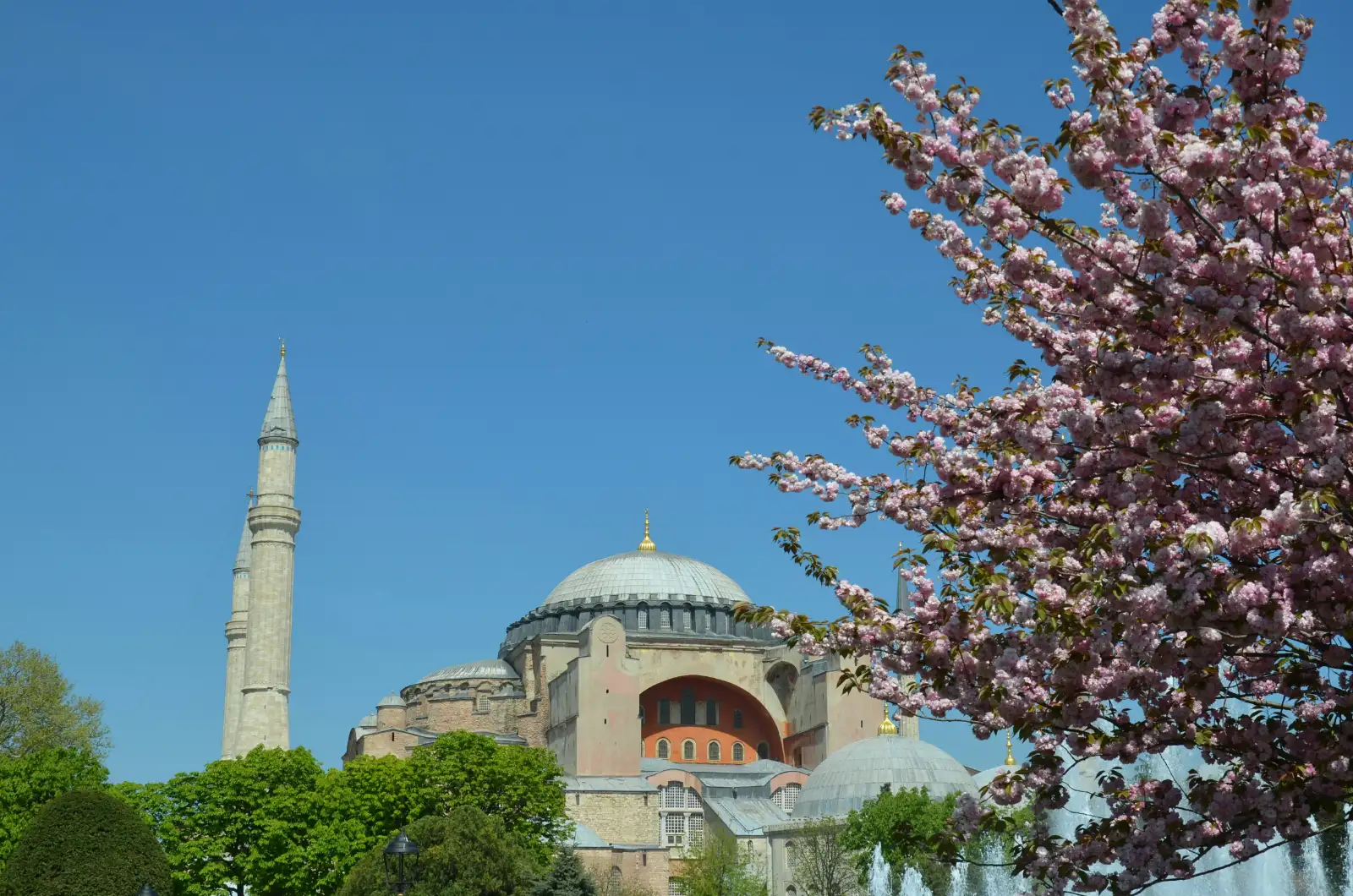Nestled in the heart of Istanbul, the Hagia Sophia stands as a testament to the city’s rich and diverse history. This architectural marvel, which has transitioned through various phases of religious and cultural significance, continues to captivate visitors with its grandeur and historical depth. Here’s a closer look at why the Hagia Sophia is considered one of Istanbul’s most cherished treasures.
A Historical Overview
Constructed under the orders of Byzantine Emperor Justinian I, the Hagia Sophia was completed in 537 AD as an Eastern Orthodox cathedral. For nearly a thousand years, it served as the principal church of the Byzantine Empire, symbolizing the grandeur and the religious devotion of its time. The Hagia Sophia’s original design was revolutionary, setting a new standard in architectural engineering with its massive dome and intricate mosaics.
In 1453, following the Ottoman conquest of Constantinople, the Hagia Sophia was converted into a mosque by Sultan Mehmed II. This transition marked a new chapter in the building’s history, adding Islamic elements to its design and transforming it into one of the most important mosques in the Ottoman Empire. During this period, the Hagia Sophia became a symbol of the city’s Islamic identity, with features such as minarets and calligraphic inscriptions being added.
The building’s journey took another turn in 1935, when it was secularized and converted into a museum by the Turkish Republic under Mustafa Kemal Atatürk. This transformation aimed to emphasize Turkey’s new secular orientation and the Hagia Sophia became a symbol of the country’s commitment to modernity and multiculturalism.
In 2020, the Hagia Sophia’s status was once again changed, this time returning to its origins as a mosque. Despite this change, it remains open to visitors, maintaining its role as a symbol of both historical and contemporary significance.
Architectural Wonders

The Hagia Sophia is renowned for its architectural innovation and beauty. Its dome, which seems to float miraculously above the central nave, is one of its most striking features. The use of pendentives, a construction technique that allows the circular dome to rest on a square base, was groundbreaking at the time and has influenced countless structures in the centuries since.
Inside, the Hagia Sophia is adorned with a stunning array of mosaics, marble pillars, and calligraphic panels. Byzantine mosaics depict various religious figures and scenes, providing a glimpse into the artistic and theological preoccupations of the Byzantine era. The Islamic calligraphy and geometric patterns added during the Ottoman period reflect the spiritual and aesthetic values of the Islamic world.
Cultural and Religious Significance
The Hagia Sophia’s significance transcends its architectural marvel. As a cathedral, it was a center of Orthodox Christianity, hosting significant religious events and serving as a spiritual hub for the Byzantine Empire. As a mosque, it became a key site for Islamic worship and an important symbol of Ottoman power.
Today, as both a mosque and a tourist attraction, the Hagia Sophia embodies a confluence of cultures and religions. It stands as a living monument to Istanbul’s complex history, reflecting the city’s role as a crossroads between East and West, Christianity and Islam.
Visiting the Hagia Sophia

For visitors to Istanbul, the Hagia Sophia is a must-see. Its central location in the Sultanahmet district makes it easily accessible, and its proximity to other historical sites such as the Blue Mosque and Topkapi Palace makes it a focal point for exploring Istanbul’s rich heritage.
When visiting, be sure to take in the breathtaking interior, including the vast dome, the intricately designed mosaics, and the splendid marble columns. Respect for the mosque’s religious function is essential, so visitors should dress modestly and observe appropriate etiquette during prayer times.
Conclusion
The Hagia Sophia is more than just a building; it is a symbol of Istanbul’s layered history and cultural diversity. From its beginnings as a Byzantine cathedral to its role as an Ottoman mosque and modern-day museum, it reflects the city’s evolving identity and its enduring significance. Whether you are drawn by its architectural brilliance, its historical importance, or its role as a cultural icon, the Hagia Sophia is a timeless treasure that continues to inspire awe and admiration.
